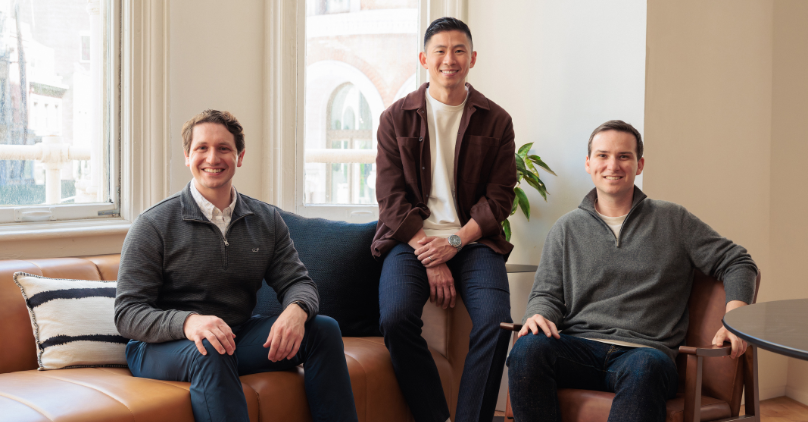The crypto industry has evolved from an infrastructure-focused early market into a mainstream technology sector defined by blockchain deployment across the global economy. Speaking exclusively to TFN, Mickey Graham, Metalayer co-founder and General Partner at Metalayer Ventures, said: “The starting point of this transformation will be the financial services industry, where crypto is rapidly being adopted to create vastly better products and services. We started Metalayer to support these pioneering founders driving the industry into its next growth phase.”
Today, Metalayer Ventures completed its $25 million fund, Metalayer Fund I, which focuses on converging traditional finance and blockchain technology. The fund is designed to back visionary founders creating infrastructure and applications that will drive the next evolution of the global economy — onchain.
Targeting institutional-grade crypto infrastructure, stablecoins, and tokenisation
Founded in 2024 by Andy Kangpan (former Digital Asset Lead at Two Sigma Ventures), David Winton (former VP of Quantitative Software Engineering at Two Sigma), and Mickey Graham (former Head of Growth at Chainlink Labs), Metalayer Ventures was established at a pivotal moment for the industry, as regulatory clarity in the US and Europe has begun to unlock new institutional participation in digital assets.
The founding team combines quantitative finance, venture capital, and blockchain infrastructure expertise. They previously contributed to Two Sigma Ventures (managing over $60 billion in assets) and Chainlink Labs, a leading provider of decentralised oracle networks.
Metalayer targets three areas with immediate mainstream adoption potential: capital markets infrastructure (technologies modernising legacy financial systems), stablecoin and payments applications (solutions providing global access to stable digital currencies with native yield), and real-world asset tokenisation (platforms enabling digital ownership of traditional assets for improved liquidity).
This focus aligns with broader industry trends: recent projections suggest tokenised real-world assets (RWAs) could reach a $50 billion market cap by the end of 2025, with tokenised U.S. Treasuries expected to surge from $3.97 billion in 2024 to $28 billion.
Despite recent crypto market volatility, major institutional developments continue to validate the crypto infrastructure thesis. Circle’s official S-1 filing and Ripple’s $1.25 billion acquisition of Hidden Road Partners mark significant milestones in converging traditional finance and blockchain, creating opportunities for specialised early-stage investors.
Metalayer’s investment thesis centres on converging traditional financial services and decentralised finance into a unified ecosystem. The firm targets founders building at this intersection, where blockchain technology solves real-world economic problems.
“One of the biggest gaps we see is the lack of dedicated pre-seed and seed funds focused on the intersection of traditional financial services and the on-chain economy,” said Kangpan. “The convergence of TradFi and crypto is no longer theoretical; it’s happening now thanks to favourable regulatory shifts in the US. While many crypto funds take a broad approach, few are purpose-built to support the category-defining companies emerging at this convergence, where deep industry context and institutional networks matter most.”
Graham told TFN: “We set ourselves apart by combining a focused investment thesis at the intersection of traditional financial services and the on-chain economy with a data-driven approach to venture investment. Our team brings over a decade of experience across venture capital, quantitative finance, and high-growth startups, giving founders a measurable edge through our application of data science to sourcing, diligence, and portfolio support.”
A key differentiator for Metalayer is its proprietary data platform, “Moirai,” engineered by Winton, who built similar systems at Two Sigma and Greenoaks. Moirai analyses unique crypto ecosystem data, including developer activity metrics, protocol engagement, and blockchain transaction patterns that are unavailable through conventional methods.
“Our sourcing engine identifies promising teams early, before they hit the typical venture radar,” said Winton. “Our automated investor co-pilot tools assess opportunities by combining qualitative evaluations with benchmarking metrics for protocol usage, adoption, and growth.”
The firm is adding two new projects to its portfolio — AnchorZero, fresh off an $8M raise led by Bain Capital Crypto and Spark Capital, and a stealth-mode stablecoin infrastructure play — alongside existing investments in Crossover Markets, ClearToken, Ethena, Station70, and Theo.
“A consistent theme through all our investments is their focus on unifying traditional financial services with the on-chain ecosystem,” said Graham. “Our central belief is that TradFi and DeFi are ultimately two sides of the same coin, and there’s immense value in backing teams unifying these worlds.”
This thesis has guided investments in companies like Crossover Markets, simplifying crypto trading for traditional institutions, and Ethena, which provides yield from both on-chain and off-chain sources. This data-driven approach proves especially valuable in the crypto sector, where on-chain activity and developer engagement indicate long-term success better than traditional financial metrics.
The firm plans to build a portfolio of approximately 30 companies, with investments ranging from $500K to $1M in early-stage rounds. While the overall crypto venture market declined 20% in Q3 2024 according to Galaxy data, new specialised funds continue entering the space, with Lennertz announcing a $165 million close and Accolade finalising a $202 million fund in late 2024.
Beyond capital, Metalayer leverages the founding team’s expertise in fundraising, growth, marketing, communications, quantitative finance, distributed systems, and machine learning. They provide portfolio companies with go-to-market strategy, financial institution introductions, executive and technical recruiting from traditional finance and crypto, and downstream capital formation support through institutional investor relationships.
As Graham concluded, “We focus on three key themes that we believe will shape blockchain’s future: financial market infrastructure, stablecoin innovation, and tokenisation. We offer hands-on fundraising, growth, and engineering support. Being builders ourselves, we function as an extension of each founding team. Our portfolio demonstrates this commitment, as we partner with promising teams during their earliest stages.”

